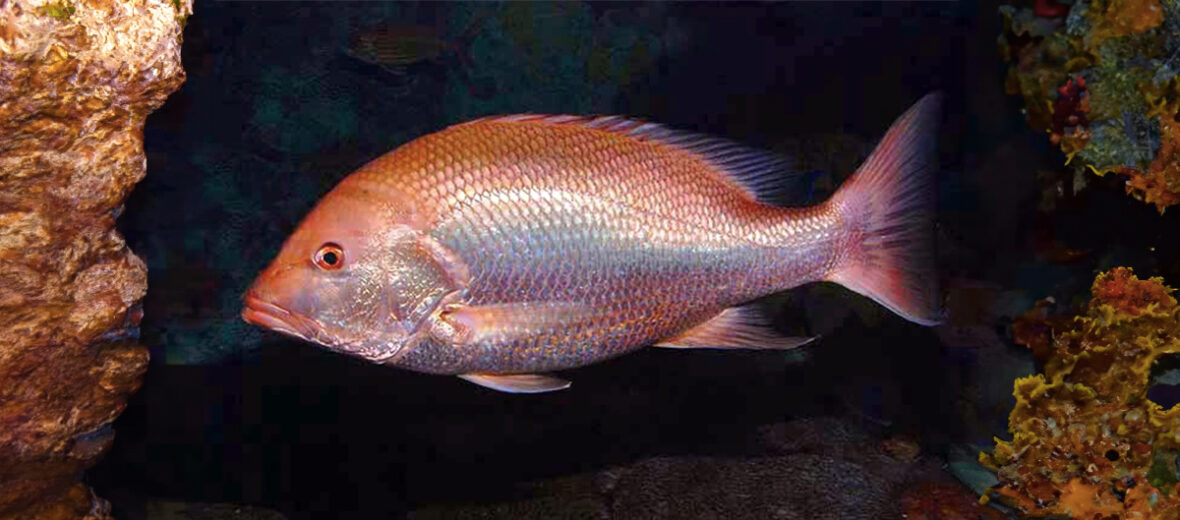
The northern red snapper is a species of marine ray-finned fish. They inhabit the coastal waters of the western Atlantic Ocean, the Caribbean Sea, and the Gulf of Mexico. They can often be found amongst reef systems. Unfortunately for their survival, they are a sought-after game fish. These fish face the threat of overfishing and have a decreasing population. Thus, the IUCN lists these fish as Vulnerable.
First the Stats…
Scientific name: Lutjanus campechanus
Weight: Up to 50+ lbs.
Length: Up to 39 inches
Lifespan: Up to 50+ years
Now on to the Facts!
1.) The northern red snapper was initially described in 1860 as Mesoprion campechanus by Cuban zoologist Felipe Poey.
2.) They can be found at depths of up to 620 feet.
3.) These snappers are gregarious and form large schools around reefs and wrecks.
4.) Newly hatched red snappers spread out over large regions of open benthic (ocean floor) habitats, then move to low-relief habitats, like oyster beds.
5.) When they reach 1 year of age, they move into intermediate-relief (variations in height and elevation of the ocean floor’s surface) habitats as the previous year’s fish move on to high-relief reefs that have room for more fish.
But wait, there’s more on the northern red snapper!
6.) Northern red snapper are a prized food fish, and are caught commercially and recreationally.
7.) Red snapper is the most commonly caught snapper in the United States.
Did you know…?
These critters are also known by the names chillo, huachinango, mero, or pargo.
8.) Small fish and crustaceans make up the bulk of their diet.
9.) Fishing limits have been put in place to help ensure a sustainable population.
10.) Sebastes and rockfish are often confused for red snapper or Pacific red snapper.
Now a Short Northern Red Snapper Video!
Be sure to share & comment below! Also, check out the Critter Science YouTube channel. Videos added regularly!
Want to suggest a critter for me to write about? Let me know here.
Some source material acquired from: Wikipedia & IUCN



